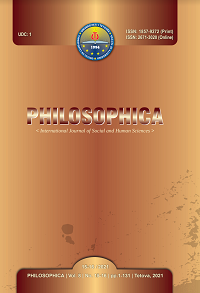THE AESTHETICAL SCOPE OF THE SIX-POINTED STAR IN THE ALBANIAN CULTURAL INHERITANCE
THE AESTHETICAL SCOPE OF THE SIX-POINTED STAR IN THE ALBANIAN CULTURAL INHERITANCE
Author(s): Metin IZETISubject(s): Philosophy
Published by: University of Tetova
Keywords: Six-pointed star; Albanian cultural inheritance; aesthetics; the seal of Solomon
Summary/Abstract: Man, being the foundation of civilizations and cultures, has always sought ways to express his feelings and thoughts. And the most direct way of explaining and conveying feelings and emotions are symbols. Man, in each era, with his presence in the world, has used various symbols to paraphrase his ego and has attached different religious, mystical, sensory and ideological meanings to them. The six-pointed star surely is considered one of the most universal symbols that has maintained its presence throughout different civilizations and has even reached us today. The six-pointed star has been used throughout almost all historic eras and has managed to keep its universality despite the local contexts given to it. The six-pointed star, embezzled by Muslims as a seal or ring of Solomon (PBUH), dating from the Seljuk Empire up to Osman art, has been used for decorating Muslim objects. The six-pointed star in Islamic art can be found carved on marble, metals, wood, paper and so forth. The six-pointed star is especially found in cubes, ceilings, gates as well on various religious objects like mosques, tekkas, madrasahs and the like. In the history of Islamic art, even in Albanian territories, there have been many instances of the usage of the six-pointed star. In this paper, we shall only use some examples that will serve as illustrations.
Journal: PHILOSOPHICA International Journal of Social and Human Sciences
- Issue Year: 8/2021
- Issue No: 15-16
- Page Range: 60-69
- Page Count: 10
- Language: English

